All righty, grab a water bottle, fill it with your beverage of choice, and let’s bring to life some of my favorite sights on or near Boston’s Freedom Trail.
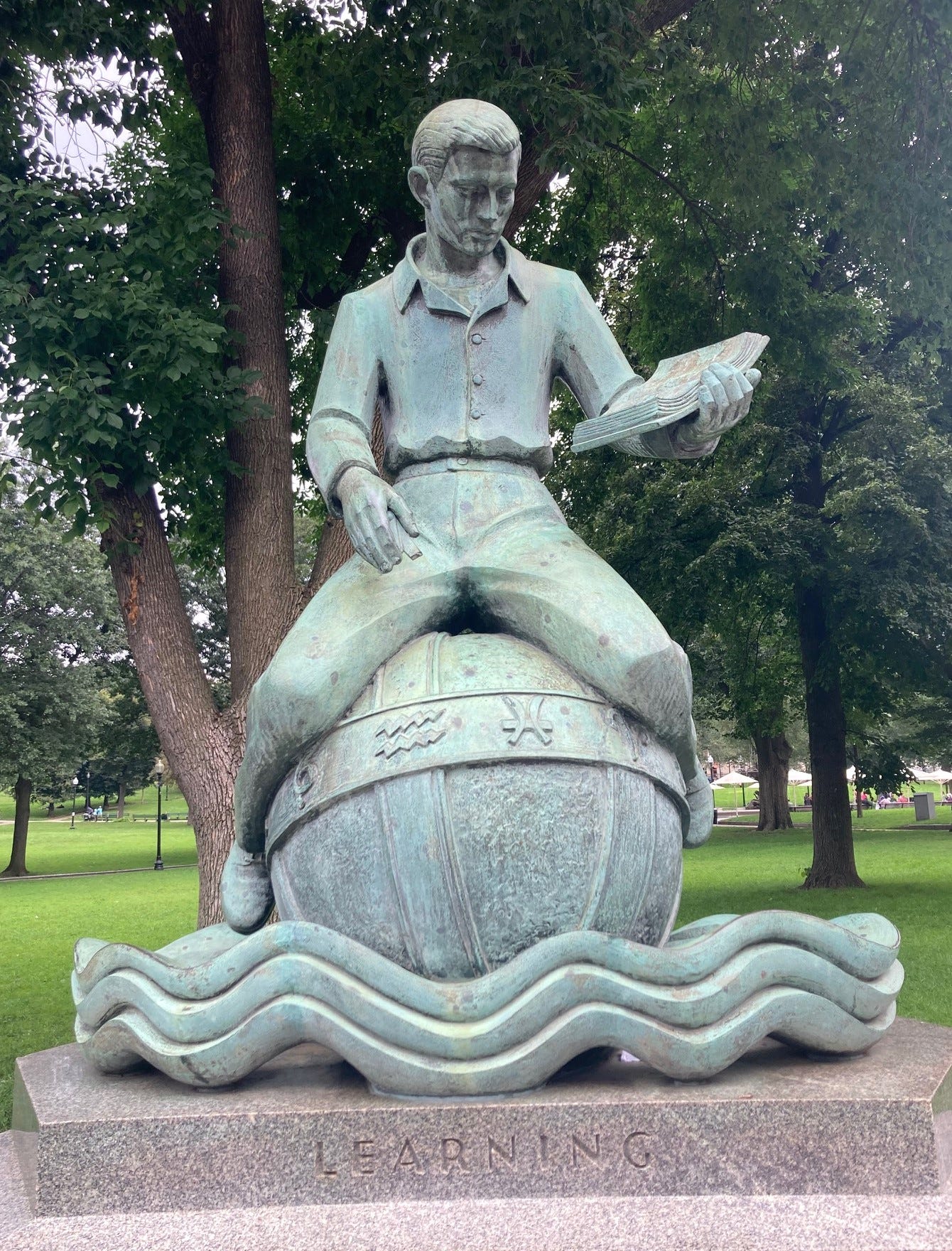
1: Boston Common, by the Park Street T stop. Boston’s subway system, known as the “T,” is the oldest in the nation. Park Street and Boylston are tied for the distinction of being the oldest subway’s oldest T stations.
Please be advised that this article will include references to many “firsts” and “oldests.” Bostonians are nearly as proud of their oldests and firsts as they are of the CelticsBruinsRedSoxTomBradyEraPatriots.
Head clockwise around the pentagonal Boston Common, i.e., along Tremont Street toward Boylston. The people-watching in our nation’s oldest (1634) public park is primo. You’ll see a dog walker here, a balloon artist there, and numerous commuters, alms-seekers, nannies with strollers, tourists, and costumed personages who I sincerely hope are tour guides, not cos-players.
What you won’t see are public hangings (discontinued in 1817) and cow herding (cows were banned from the Common in 1830, although the occasional rouge defied that ban as recently as the 1920s).
Presumably, you also won’t see any duels, although they too were a Common thing once upon a time. Boston’s first fatal duel was fought the night of July 4, 1728. Benjamin Woodbridge, 20, got into an alcohol-infused argument with 22-year-old Harvard graduate Henry “Blubber” Phillips. After Phillips delivered a death stab to Woodbridge, local elites and Royal Navy officers whisked him away to France, where he lived, lonely and remorseful, until following Woodbridge into the Sweet Hereafter less than a year later.
Just across Charles Street you’ll see the Boston Public Garden. If America’s first public botanical garden (1839) is too inviting to resist, don’t! Pop across—at a crosswalk, as this is one place where I would not endorse jaywalking—and ramble its leafy pathways or ride in an iconic swan boat.
PRO TIP: The Four Seasons Hotel on Boylston Street has excellent bathrooms, should you need one at this point in your journey.
I could go really history geeky here and ask you to imagine Charles Street as a ropewalk, at a time when water, rather than the Boston Public Garden, lapped against it, but we might never get out of that rabbit hole.
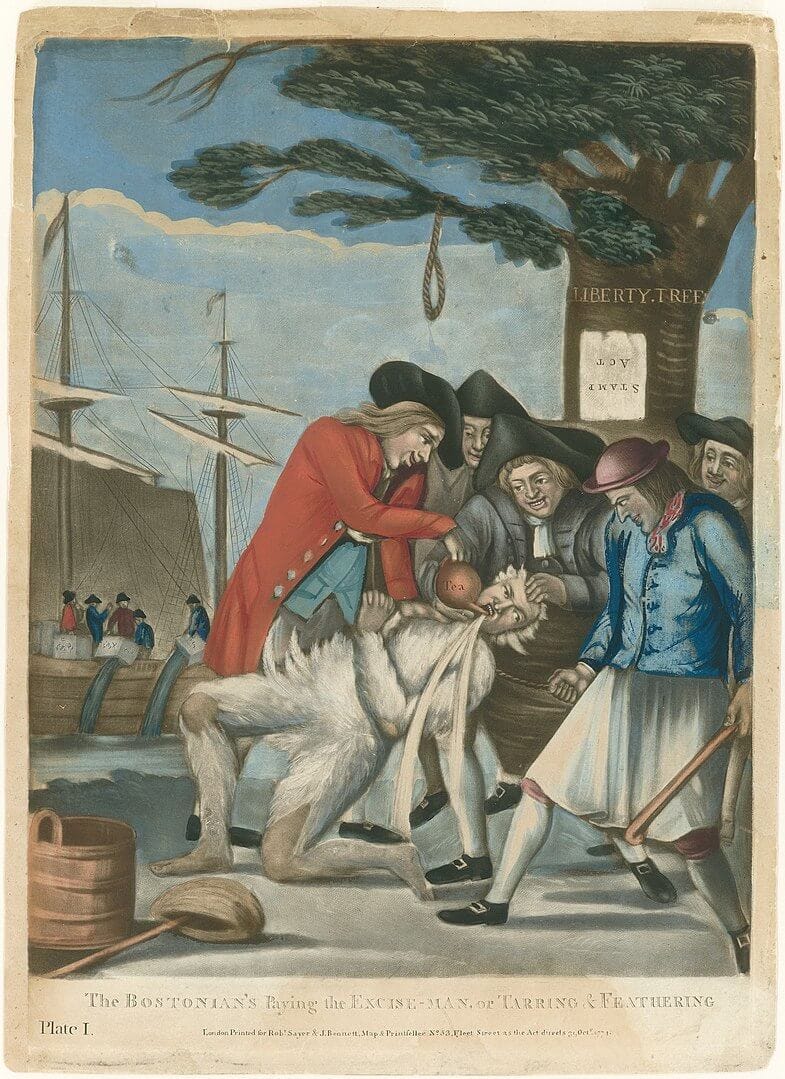
Let’s proceed uphill, paralleling Beacon Street and its magnificent-and-so-far-out-of-my-price-range houses, until reaching:
2: The Massachusetts State House. Bostonians understandably were psyched about the colonies’ Revolutionary War win. Obviously, the old, British-built state house simply would not suffice as a seat of government for the Commonwealth’s newly independent citizens. Boston-born-and-bred architect Charles Bulfinch, who later designed the US Capitol and grounds, was hired to create a new Massachusetts state house. When it opened in 1798, this seat of government sported a copper dome. In 1874, the dome was covered with 23-carat gold leaf.
I highly recommend a look-see inside and, if you’re so inclined, take a virtual or in-person tour. Make sure you check out the Sacred Cod in the House chamber.
3: Robert Gould Shaw 54th Massachusetts Memorial. Augustus Saint-Gaudens took 14 years to finish this stunning, bas-relief bronze sculpture honoring the Civil War’s first regiment of Black soldiers—mustered, of course, in Boston—and their white commanding officer, Colonel Robert Gould Shaw.
The 54th famously was depicted in the 1989 movie Glory, which I haven’t seen for about 30 years. Wait, what? I just looked up the Glory cast, and, not only does it memorably feature both Denzel Washington and Morgan Freeman, but also Bob Gunton, who played Shawshank Redemption’s (a.k.a., “Best Movie Ever”) Warden Norton. I sure hope he’s nicer to Morgan Freeman in Glory than he was in Shawshank.
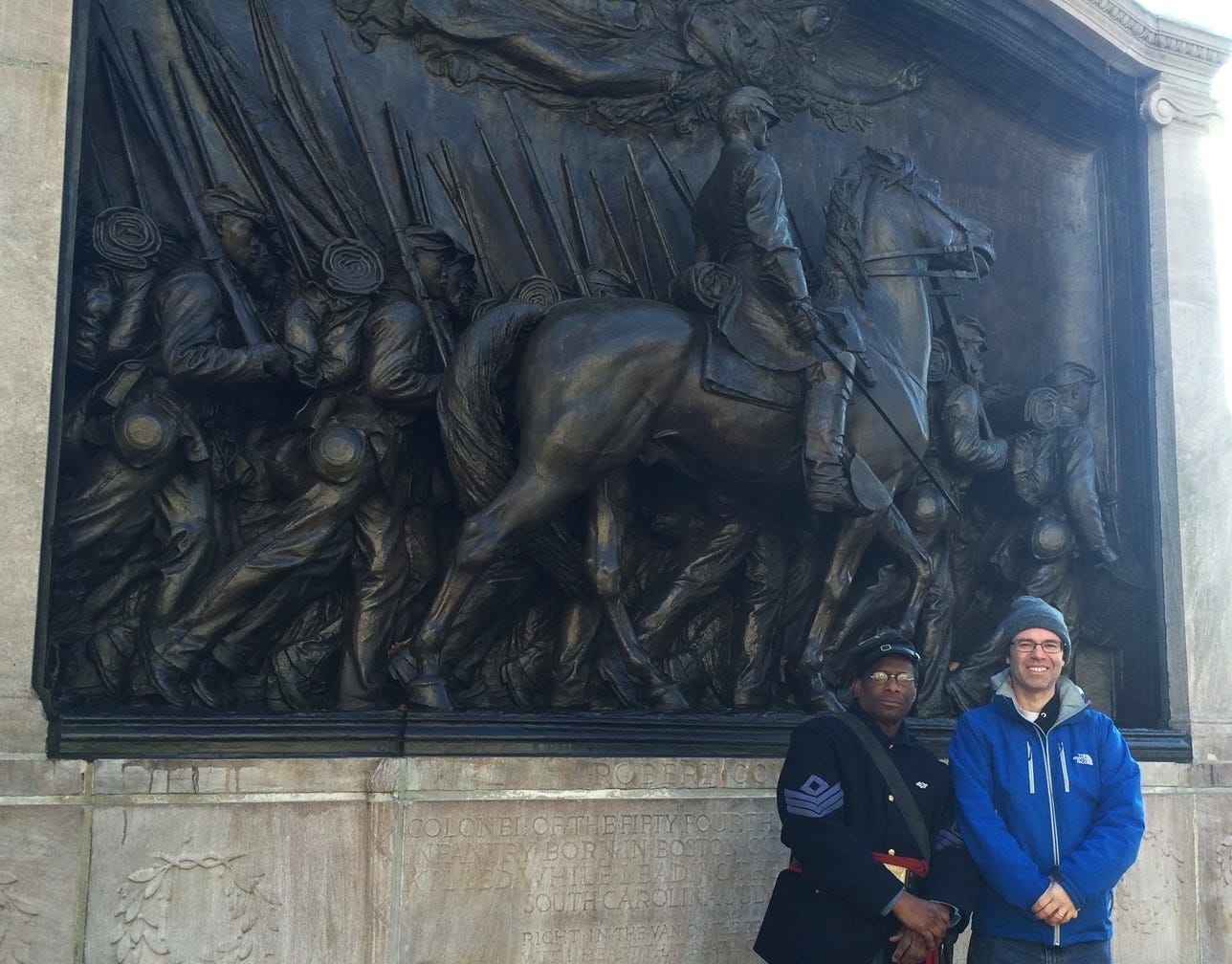
I could write a lengthy essay on the memorial’s history and my thoughts about it, but I’ll limit myself to this observation:
Dedicated in 1897, the Robert Gould Shaw 54th Massachusetts Memorial was situated across the street from the state house to remind lawmakers of the freedoms for which Union soldiers had fought, and to sustain the ongoing battle to ensure, in the words of Massachusetts Senator Charles Sumner, “equality before the law” for all citizens.
Meanwhile, during the 1890s and early 1900s, monuments to the “Lost Cause,” the romanticized version of the Confederacy’s Civil War defeat, were being erected in public spaces throughout the south to mollify whites while signaling to Blacks in no uncertain terms who would and would not receive “equality before the law.”
Some food for thought as you walk the Freedom Trail.
4: The Granary Burying Ground. The Freedom Trail offers several cemetery exploration opportunities. I’m especially fond of “Old Granary.”
This is one of my favorite headstones ever. I don’t know anything about Elizabeth Ireland, whose remains are interred beneath, but I love the badass lounging skeleton, who looks like he’s posing, scythe draped invitingly across one leg, for a “Sexiest Skeleton of the Year” cover shot.
And remember poor Benjamin Woodbridge, who was killed by “Blubber” Phillips in that duel on Boston Common? He’s buried in Old Granary. His headstone features a more run-of-the-mill winged skeleton head.
Both Sam Adams and Paul Revere are buried in Old Granary. Years ago, a tour guide on the North End part of the Freedom Trail told me that Paul Revere’s image, not Sam Adams’, is featured on Sam Adams beer bottle labels.
According a 2017 Twitter—sorry, “X”—post from @SamuelAdamsBeer, “the Sam Adams image we use is actually based off of a portrait of him- though it is a similar style to the one used in popular portraits of Paul Revere.” Mind you, a 2019 post from @weird_hist claims that “Paul Revere, not Samuel Adams, is featured on Samuel Adams Beer. Allegedly due to Sam's bad looks.”
You be the judge.
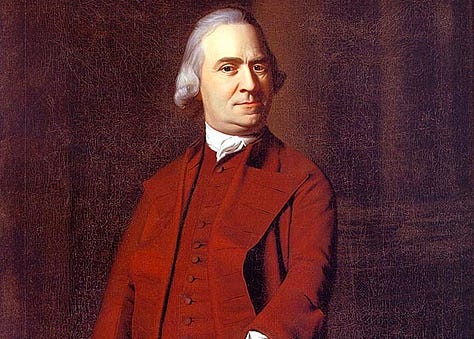
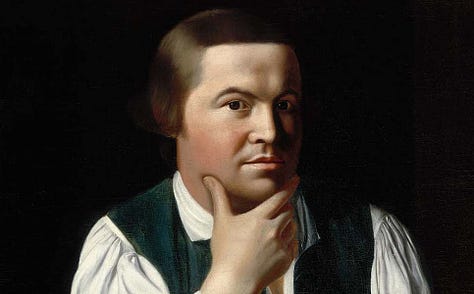

5: Old Corner Bookstore. Boston’s oldest commercial building (1718) stands on the site once occupied by Anne Hutchinson’s house. Anne didn’t toe the traditional Puritan religious line, so she and her family were excommunicated and driven out of Boston.
So much for religious freedom.
The building that became known as the Old Corner Bookstore started as an apothecary. By the mid-1800s, it was home of the book sellers, then thriving publishing company, Ticknor & Fields. Literary movers and shakers of the time—including Emerson, Thoreau, Hawthorne, and Holmes—gathered at Old Corner, earning it the moniker “the hub of the Hub.” Oliver Wendell Holmes had dubbed Boston’s state house (the shiny new one) the “Hub of the solar system,” a term which proud Bostonians soon used to refer to their entire city.
The hard-to-read sign above “School Street” says “City of Boston Literary Cultural District.” I get all misty-eyed thinking about when this really was a literary cultural district. While I wish the Old Corner Bookstore still held books instead of a Chipotle’s, at least the beautiful building was preserved. And, if it had to house a fast-food chain, at least it’s a good one.
6: The Steaming Kettle. Whether or not you’re a fan of their coffee, I encourage you to make tracks for Starbucks’ Court Street location and look above the doorway. That gigantic steaming tea kettle was crafted in 1873 for the Oriental Tea Company, and looking at it always makes me smile.
In a brilliant, Gilded-Age marketing move, the company ran a grand-opening contest asking people to guess how much water the kettle could hold. Eight of the 1,300 entrants correctly guessed 227 gallons, 2 quarts, 1 pint, and 3 gills (that’s 12 ounces in modern-speak).
Yeah, that’s exactly what I would’ve predicted.
7: Choose Your Own Adventure
Want more history? Head down the stairs next to Government Center and cross Congress Street—another place I wouldn’t jaywalk—to Faneuil Hall.
If you can’t force your way behind the Boston Globe’s paywall to read the recent story Peter Faneuil, Slave Trader, then check out the “Slavery in Boston” exhibit at Faneuil Hall. The building was gifted to Boston by that very Peter Faneuil, Slave Trader, shortly before his death in 1742. Make sure you head up to the second-floor meeting space, where revolutionaries held forth and where naturalization ceremonies are held today.
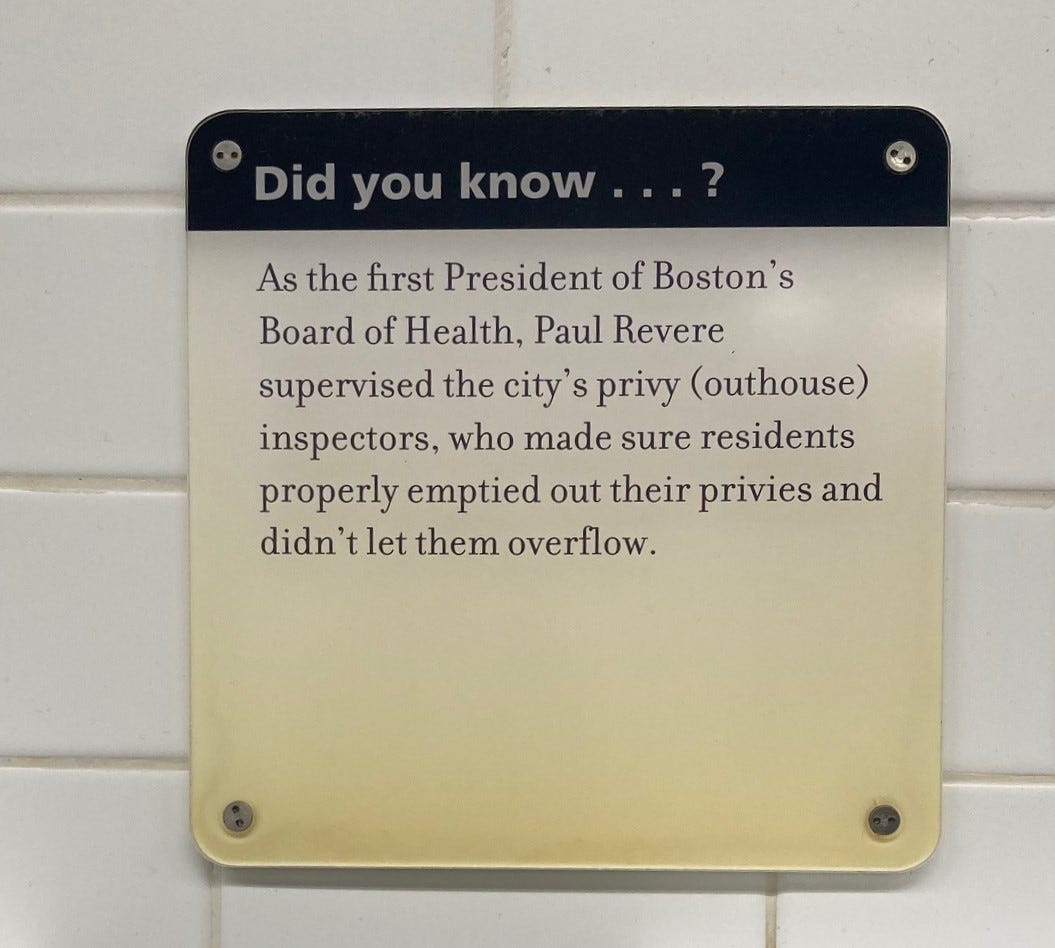
Hungry? Head to the North End via the lovely Rose Kennedy Greenway. While it’s hard to go wrong with any North End Italian restaurant, a few of my faves are Artu, Galleria Umberto, and, for the best lasagna in both the known and unknown universes, Trattoria Il Panino.
Sweet tooth? Pop over to Bova’s, not Mike’s, for better pastry and much shorter lines. Just bring cash: Bova’s doesn’t accept credit cards.
Thirsty? I’m partial to Clink at the Liberty Hotel, whose accommodations—hotel rooms, bars, and restaurants alike—are a lot more luxe than they were when the building was a prison.
Or, if you still need your fill of firsts and oldests, you could opt for Bell in Hand, America’s oldest continuously operating tavern (1795).
Ready to go home? The Government Center T stop is located across the street from the Steaming Kettle. Since it was renovated in 2016, this T stop is woefully underperforming in the “oldest” and “first” categories; however, its eau de pee is thankfully less intense.
Download the National Park Service App: https://www.nps.gov/bost/planyourvisit/app.htm, then click on “Boston National Historical Park, Massachusetts,” then “Self-Guided Tours.” There are six of them. It’s fun to dip in and out of sites on different tours while you’re doing your own thing.
Boston history in a nutshell: https://www.history.com/topics/us-states/boston-massachusetts





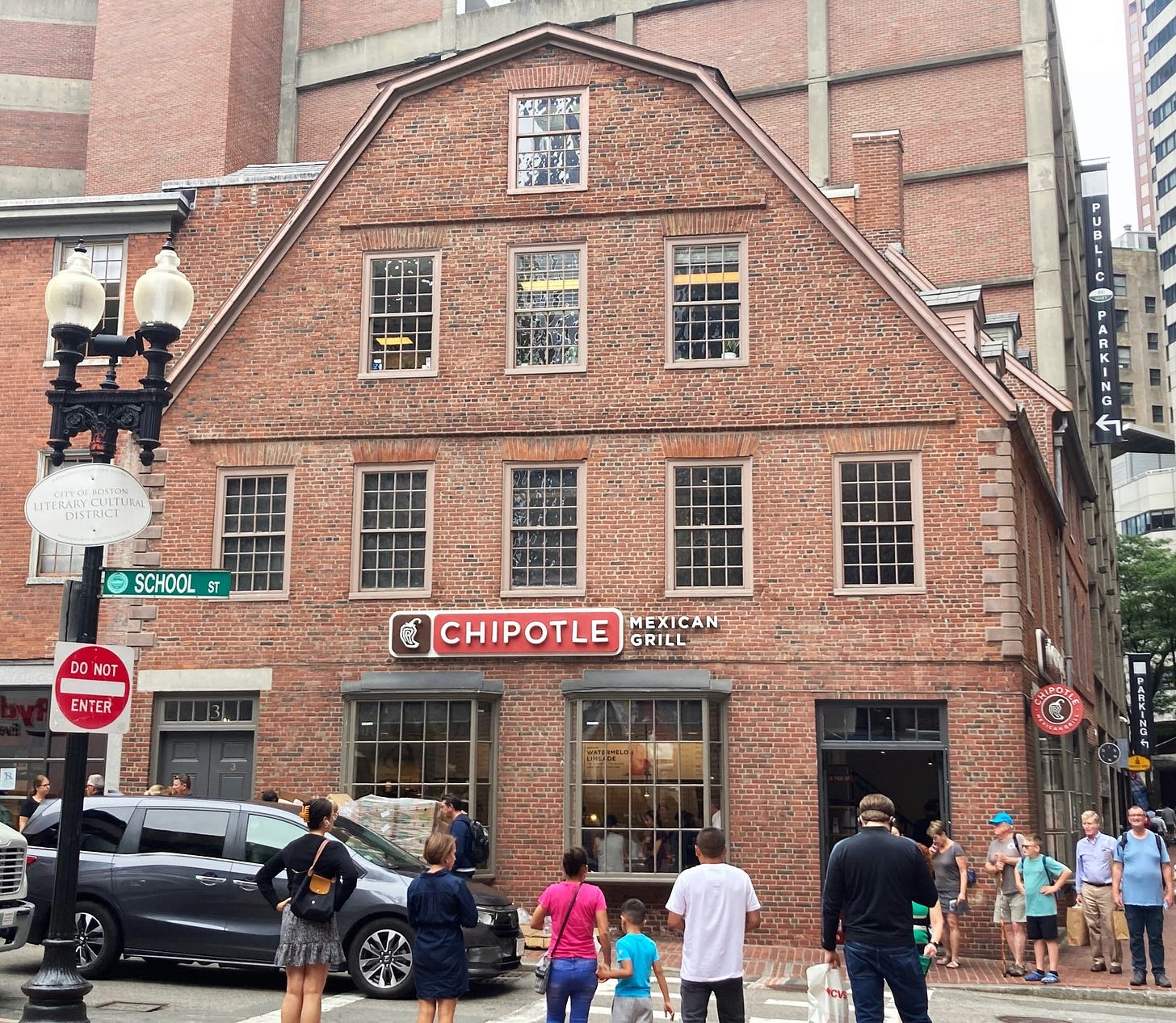
Well done! The cemetery headstones were a surprise. I love wandering through old cemeteries and have wandered that one but missed those! Skeletons seem am odd choice for that time. Perhaps you should explore headstone “fashion” over the centuries. Regarding the Sam Adams beer label. Looks like Paul Revere about 30 pounds lighter, maybe before he drank beer!
Wonderfully informative! and, as always, well written. A few puns sprinkled in make a piece sparkle.